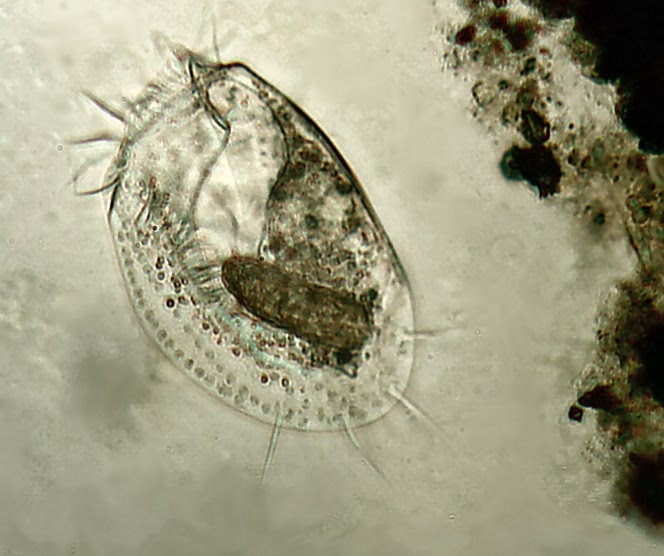A genome comparison of two strains of a bacterium reveals gene loss as a result of a symbiotic relationship with a protist host.
The Science
The researchers sequenced the complete genome for a symbiotic strain of the bacterium, Polynucleobacter necessarius. They then compared the symbiont’s genome with the free-living strain in order to understand how the symbiont adapted to its host, which it is dependent on for survival.
The Impact
Because P. necessarius has a free-living and symbiont strain, it’s an ideal organism to study evolutionary adaptation in bacteria. Moreover, the host for the symbiont strain, the ciliated protist, Euplotes, is relatively simple to grow, as is the free-living strain of P. necessarius. The researchers found that the symbiont strain lacked several genes when compared with the free-living strain, explaining why scientists have been unable to grow the symbiont strain outside its host.
Summary

The symbiont strain of Polynucleobacter necessarius lacks many genes that the free-living strain of the bacterium has, relying on its host, the ciliated protist, Euplotes (pictured above) for those functions.
Image by Guiseppe Vago, via Flickr.
P. necessarius and Euplotes are obligate symbionts, meaning both require the other organism to survive. When compared with the free-living strain, the symbiont has lost a huge chunk of its coding DNA (about 42 percent), researchers from Pisa University, JGI and several other institutions reported in the Proceedings of the National Academy of Sciences on Oct 28. Although the symbiont can carry out basic metabolic and respiration processes, it has lost several genes for carbon and nitrogen metabolism and the genes it retains for sulfur metabolism are probably no longer functional. It probably depends on its host for these essential functions.
The symbiont strain retains genes for metabolism, growth and DNA replication, but those for membranes, transport, environmental sensing and regulation are reduced. For example, the already whittled genes for sensing and resistance in the free-living strain are mostly lost or non-functional in the symbiont. It’s not as nimble at reacting to environmental changes or at adapting its cell wall and membrane, but the cytoplasm of its host is probably more stable than the environment the free-living strain must endure.
While this analysis explains why the symbiont strain can’t live outside its host, the researchers found no genes that helped explained why Euplotes requires P. necessarius to survive. The researchers did find a cluster of genes similar to bacterial secretion systems in the symbiont strain that the free-living strain lacked. They suggest that this “pathogenicity island” had helped the symbiont invade, or at least survive being engulfed by Euplotes, sometime in its evolutionary past.
Contact
Giulio Petroni
Pisa University, Pisa, Italy
[email protected]
Funding
DOE Office of Science, Office of Biological and Environmental Research
European Commission FP7-PEOPLE-2009-IRSES project CINAR PATHOBACTER
European Cooperation in Science and Technology (COST)
Publication
Vittorio Boscaro, et al. Polynucleobacter necessarius, a model for genome reduction in both free-living and symbiotic bacteria PNAS 2013 : 1316687110v1-201316687.
doi:10.1073/pnas.1316687110
Related Links
http://www.pnas.org/content/early/2013/10/24/1316687110.abstract